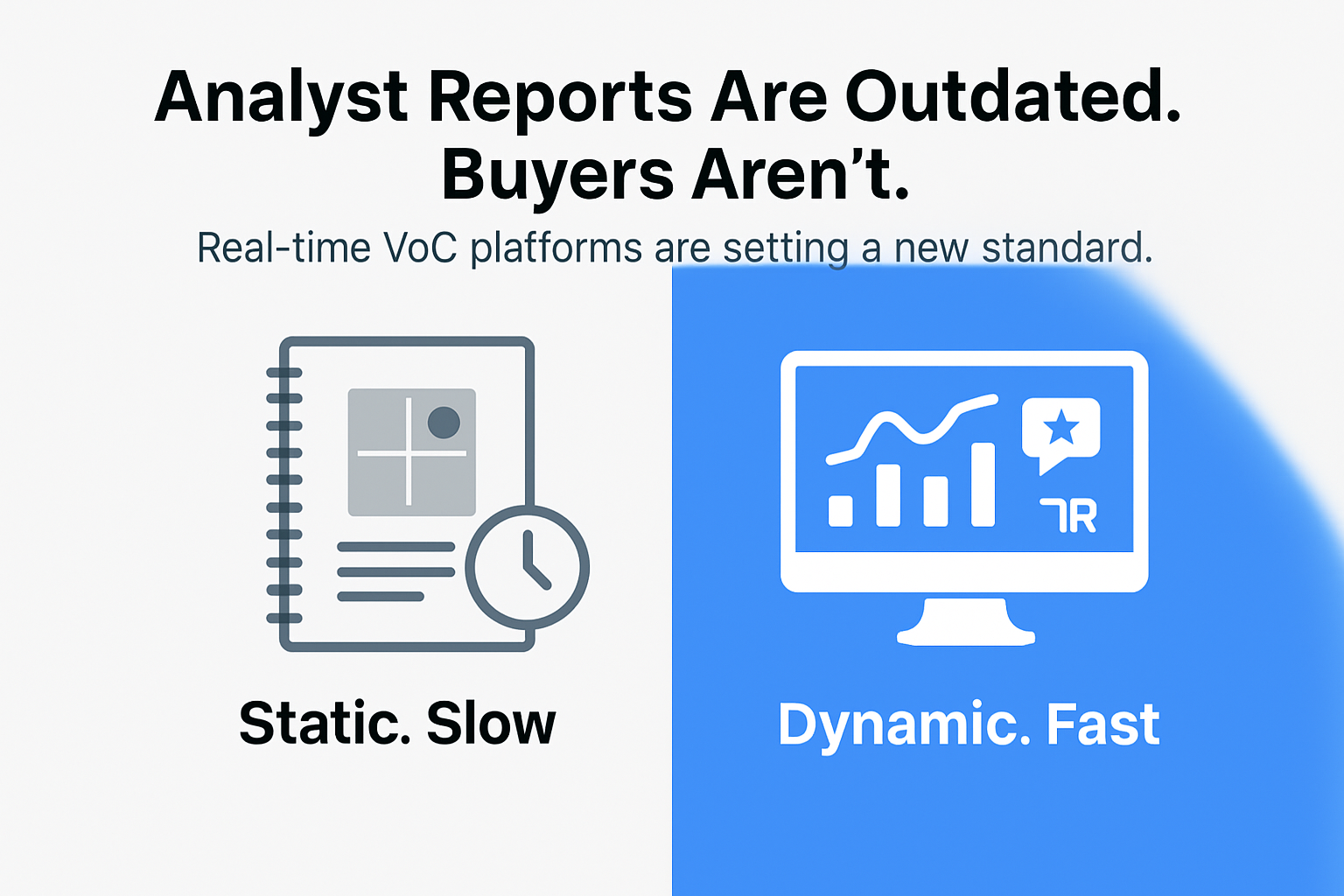Predictions 2025: Crystal ball gazing by Destrier’s team
As a little extra, here’s a GenAI-created summary of our 2025 predictions.
Enjoying our content? Then follow Destrier on LinkedIn. If you’d like to learn more about what we do, contact us.
Over the past few days, we’ve been sharing Destrier’s 2025 predictions. Destrier is a leading independent provider of Analyst Relations advisory services and support to tech vendors.
Working with multiple clients in various industry areas gives us unique insight into the industry analyst firm landscape and fuels these predictions.
1. The Informa Tech and TechTarget merger – will a powerhouse finally emerge in 2025? AR veterans may – quite rightly – be skeptical, based on previous big promises from Informa Tech about how its portfolio of analyst firms will influence IT decision-makers (ITDMs). We think the TechTarget tie-in is a little different. It’s an opportunity in 2025 to offer an end-to-end approach. That includes creating a focal point in targeting those ITDMs with insight and analysis from reports like Omdia Universe reports, plus strategic advisory from its expanded stable of analysts.
On the analyst side, the merger brings together a wealth of well-known and respected analyst houses – Omdia, Canalys (a 2024 Informa acquisition), and Enterprise Strategy Group from the TechTarget side.
On paper, Informa TechTarget has a compelling value proposition. That’s why we predict that in 2025, AR professionals will closely watch how this all comes together.
2. Uncertain times for Forrester: Much has already been written about Forrester’s loss of momentum. The TL;dr: Forrester is losing relevance to tech buyers. Vendor spending is down, end-user inquiry volumes are falling, and its events business has struggled to regain momentum post-Covid.
It’s a vicious circle: If Forrester’s research reaches a dwindling number of tech buyers, its influence wanes. Therefore, AR professionals will be less prepared to invest in responding to Forrester research requests.
Forrester still has some great analysts on the team, but how long can they stay if this situation does not improve? As revenue falls, Forrester’s wafer-thin margin may drop into a loss-making situation, which will mean layoffs.
3. Gartner will extend the scope of its new Emerging Market Quadrant reports. Today, EMQs cover four GenAI-related markets. This will grow in 2025, despite the introduction of the EMQ process being a trial by fire for the Gartner team – as outlined in Destrier’s definitive guide.
This was partly due to several leading vendors being slow on the update, requiring Gartner’s analysts to do more desk research than initially planned. The EMQ’s four-week update cycle is ambitious and punishing but marks a significant shift to an always-on approach, away from the annual data grab. AR teams must understand and recognize the impact this will have on their workflow.
4. Expect incremental changes to the Gartner Magic Quadrant process. In 2024, Gartner was busy adding a slew of new MQs – and in 2025, we anticipate that it will take the next step in industrializing the way data is collected from vendors. That means all MQs will adopt the web-based Provider Information Portal (PIP) and abandon using spreadsheets to collect data from vendors.
We also expect that Gartner will officially recognize what has been a creeping return to asking vendors in Magic Quadrants for customer references instead of – or as well as via Gartner Peer Insights, which remains the official channel for the voice of the customer for MQs – for now. However, if Gartner weakens this link, AR professionals will have less reason to provide custodial ownership of GPI within their organization.
5. A proliferation of alternative analyst reports will put the squeeze on IDC MarketScapes and Forrester Waves. We don’t expect any specific “alternative to Gartner” analyst research request to erode the resources dedicated by AR teams to a Gartner Magic Quadrant or Emerging Market Quadrant. However, it’s important to remember that AR teams only have finite resources.
This creates a real and present danger that IDC MarketScapes or Forrester Waves will merit less attention as they face more competition from “challenger” reports. This will especially ring true in cases where AR teams feel that the lead analyst could be more favorable and that even intense engagement has not yielded a coveted leader position.
For example, Everest is growing fast and about to displace Forrester as the third-largest firm by analyst headcount.
6. The rise of the Document Review. We’ve long considered document review as a powerful component in the analyst relations toolbox. However, until recently, it has been overlooked by many AR pros. Why is that changing? Quite simply, because Document Review reaches the analysts that other approaches cannot reach.
Analysts like it, too. They get credits for Document Review and can block hours on their calendars, creating much-welcome breathing space. And, of course, there is no better way to get an analyst to pay attention than asking for their expert opinion on a positioning paper or PowerPoint presentation.
7. And finally – the AI-related prediction: GenAI tools will revolutionize how AR teams prepare, monitor and debrief on analyst engagement – but don’t overlook the human side.
No set of 2025 predictions would be complete without GenAI. But is this a prediction or a look-back?
In 2025, expect AR professionals to integrate AI tools more deeply into the core battleground of summarizing written and verbal content and creating recommended actionable insights.
AR professionals who want to keep up must continually invest time and effort in learning new skills and harnessing the remarkable new superpowers that GenAI delivers.
However, analyst relations will always be a people business; no AI can replicate this.






